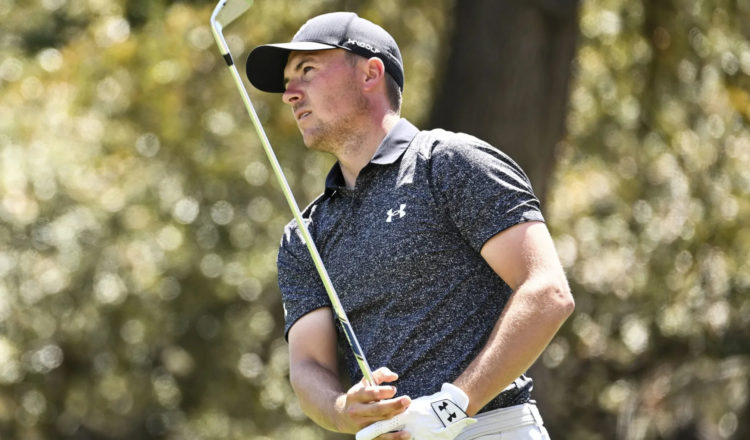Augusta National’s reputation as a ‘second shot’ golf course is fortified with a deep dive into the stats

The best wedge shots of Jordan Spieth’s career
For decades, players and fans alike have shared the colloquialisms common with Augusta National strategy. From the hilly terrain to the nuanced putting surfaces, “missing it in the right place,” and all points in-between.
In recent years, the advent of Strokes Gained and its application in the major championships have provided a deeper understanding of what is required to win. That includes at Augusta National, where analytics have helped supplement the recent on-course stories played out by the world’s best.
Its reputation as a ‘second shot’ golf course becomes even more fortified with a deep dive into the numbers.
Little Penalty for Missing Fairway
In order to best explain the significance of approach play at the Masters, the story begins with what players don’t have to worry about off the tee: rough.
Annually, Augusta National yields the lowest penalty for missing fairways among major Tour venues around the world. Consider the rate at which players make birdie or better on certain holes across the last 10 Masters. On seven of 14 holes (par 4s and 5s), there is a difference of less than 10% in birdie-or-better rate depending on whether or not a player hits the fairway. For example, at the fifth hole, players who hit the fairway make birdie or better 8.7% of the time. Players who miss the fairway, 4.7%.
Since 2010, players to finish in the top 10 at the Masters have averaged 9.6 fairways hit per round. Every other finisher at Augusta in that span has averaged almost the same total: 9.5. So while nobody wants to be stuck behind a pine tree, the numbers say that accuracy off the tee isn’t a significant advantage at the season’s first major.
Approach Play Paramount
In any given PGA TOUR season, a look at the Strokes Gained: Approach leaders often closely resembles the top of the Official World Golf Ranking. Six of the top-12 in this week’s OWGR are also ranked 12th or better in Strokes Gained: Approach per round this season on TOUR. That is to say, strong iron play is a prerequisite for great golf almost all the time.
That is even more true at Augusta National, where five of the last seven champions have ranked top-five in the field that week in Strokes Gained: Approach. Jordan Spieth leads all players in that statistic since 2015, averaging 1.17 Strokes Gained: Approach per round. It’s no coincidence that he’s also the leader in cumulative score to par (45-under) and birdies-or-better (141) in that same stretch.
Over the last eight PGA TOUR seasons, tournament winners have gained 35.4% of their strokes against the field with their approach play, the highest percentage of the four Strokes Gained disciplines (Off-the-Tee, Around-the-Green and Putting being the others). At the Masters in that span, that number is a bit higher, 36.0%. While this doesn’t seem like an enormous gap, the margin at which the best iron players can separate themselves from the pack is clearly larger at Augusta than at the typical PGA TOUR venue.
| Strokes Gained Approach – Field Rank of Last 7 Masters Champions | ||
| Year | Player | Rank |
| 2015 | Jordan Spieth | 1st |
| 2016 | Danny Willett | 1st |
| 2017 | Sergio Garcia | 19th |
| 2018 | Patrick Reed | 41st |
| 2019 | Tiger Woods | 1st |
| 2020 | Dustin Johnson | 5th |
| 2021 | Hideki Matsuyama | 4th |
How about the more traditional metric of greens in regulation? Since 2012, nine of 10 Masters winners have ranked inside the top-seven that week in greens in regulation, averaging a stout 73.6%. The field average in that span is 61.3%. For the winners of every other PGA TOUR event in that span, the average GIR rate is 74.1% – not quite as high an advantage over the field (about 66%). There have been 10 Masters victories by three or more strokes since 1996. All 10 of those champions ranked sixth or better for the tournament in greens hit, with four of them leading the field outright.
The Greens at Augusta National
How does the significance of approach play compare to putting? Again, the margins are small, but they add up quickly when it comes to determining who wins the Green Jacket.
For the last seven winners (as far back as the data goes), 33.6% of the strokes gained by tournament winners have come on the greens, a bit less than on approach (36.0%). In seven of those 28 rounds, winners have had negative Strokes Gained: Putting. That is only the case for five rounds when it comes to approach play. Five of the last six Masters winners have ranked outside the top-five that week in Strokes Gained: Putting; only two have done so in Strokes Gained: Approach.
The four players with the most Strokes Gained: Putting per round at the Masters since 2015 are Rickie Fowler (+1.60), Russell Henley (+1.47), Matt Fitzpatrick (+0.85) and Justin Rose (+0.82).
Tiger Woods’ 2019 Triumph
Three years ago, Tiger Woods won his fifth Masters title thanks to a week of exquisite, vintage approach play.
Woods hit more than 80% of his greens in regulation, most of any player in the field and the most by an April Masters champion since Tiger himself 18 years prior. He also led the field in Strokes Gained: Approach, gaining more than a full stroke in Rounds 1, 2 and 3, and a whopping 2.87 on Sunday. In all, more than 57% of Woods’ total strokes gained against the field for the week came from his approaches.
Whoever authors their winning Masters story this week will likely follow a similar formula.













